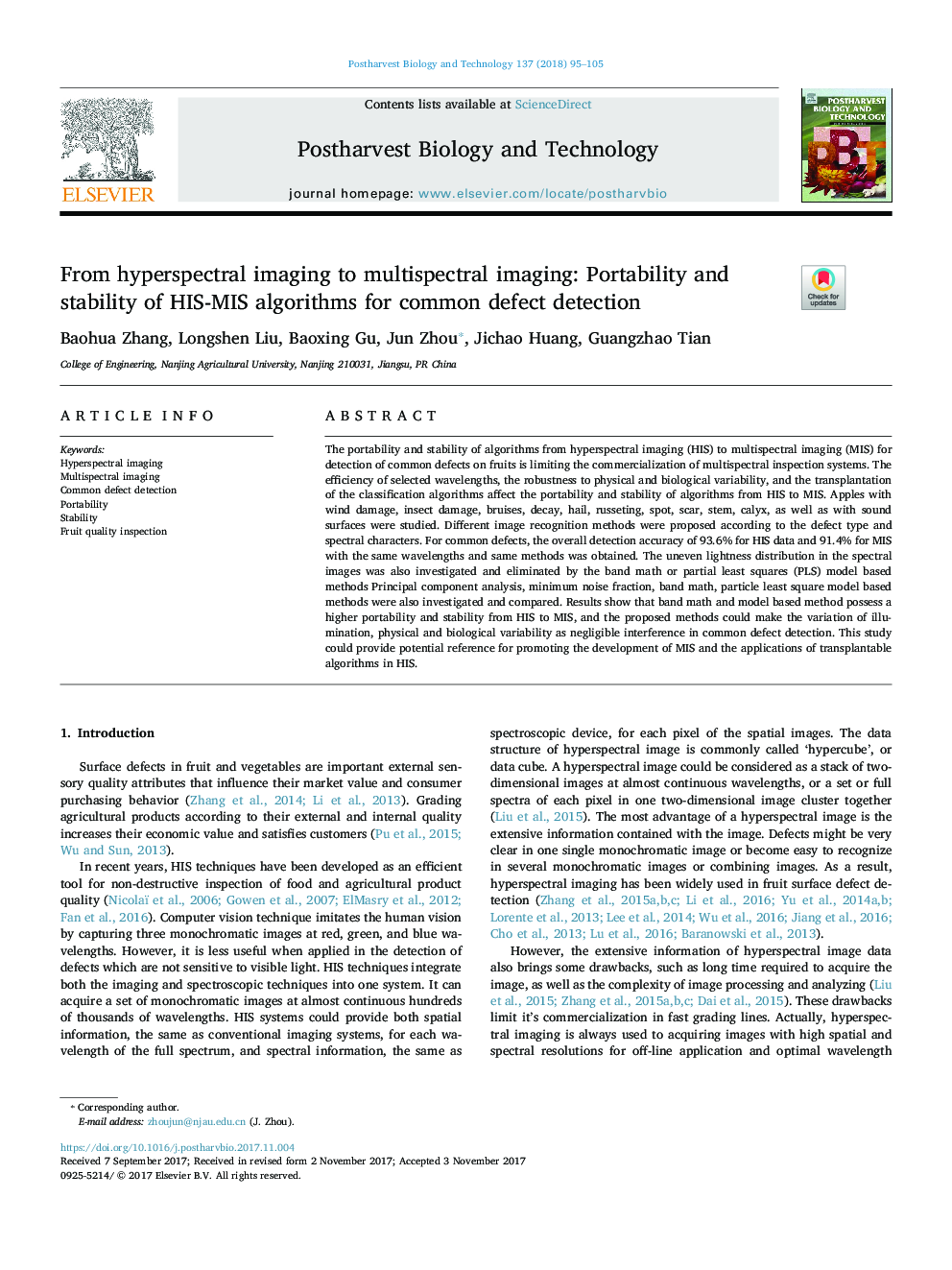| Article ID | Journal | Published Year | Pages | File Type |
|---|---|---|---|---|
| 8882025 | Postharvest Biology and Technology | 2018 | 11 Pages |
Abstract
The portability and stability of algorithms from hyperspectral imaging (HIS) to multispectral imaging (MIS) for detection of common defects on fruits is limiting the commercialization of multispectral inspection systems. The efficiency of selected wavelengths, the robustness to physical and biological variability, and the transplantation of the classification algorithms affect the portability and stability of algorithms from HIS to MIS. Apples with wind damage, insect damage, bruises, decay, hail, russeting, spot, scar, stem, calyx, as well as with sound surfaces were studied. Different image recognition methods were proposed according to the defect type and spectral characters. For common defects, the overall detection accuracy of 93.6% for HIS data and 91.4% for MIS with the same wavelengths and same methods was obtained. The uneven lightness distribution in the spectral images was also investigated and eliminated by the band math or partial least squares (PLS) model based methods Principal component analysis, minimum noise fraction, band math, particle least square model based methods were also investigated and compared. Results show that band math and model based method possess a higher portability and stability from HIS to MIS, and the proposed methods could make the variation of illumination, physical and biological variability as negligible interference in common defect detection. This study could provide potential reference for promoting the development of MIS and the applications of transplantable algorithms in HIS.
Related Topics
Life Sciences
Agricultural and Biological Sciences
Agronomy and Crop Science
Authors
Baohua Zhang, Longshen Liu, Baoxing Gu, Jun Zhou, Jichao Huang, Guangzhao Tian,
